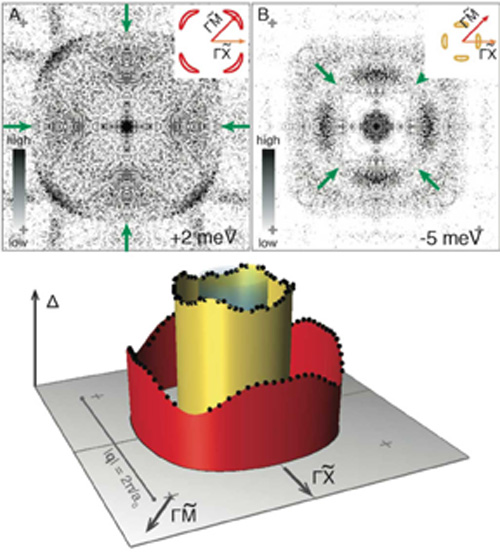 Correlated
CorrelatedSuperconducting
wires conduct electricity perfectly — without any energy losses — because
each electron spontaneously bonds to a partner electron. The pairs then perform
an intricate dance down the wire, never bumping into the walls or other pairs. Unfortunately,
the pairs are usually weak, breaking apart at all but the coldest temperatures,
destroying the superconductivity and limiting most practical applications.
Scientists are pursuing the possibility of electron pairing in a special class
of materials (nearly antiferromagnetic compounds) hoping to find magnetically mediated superconductivity at
ever higher temperatures.
For
the first time, researchers at Cornell University have directly imaged the
intricate dance of electron pairs in a new type of iron-based superconductor
using a highly specialized scanning tunneling microscope. As predicted by
theories of magnetically mediated electron pairing, the strength of
electron-electron bonding is different for electrons travelling in different
directions. The electronic structure images provide new clues to the magnetic
origin of high-temperature superconductivity, bringing practical
superconductors a step closer to reality.